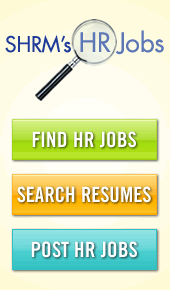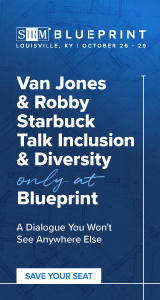What About Your Managers?
In recent years, the business world has witnessed a significant shift in workforce dynamics, as people with more leverage leave, consider leaving, or “check out” of their current job. This movement has seen a significant uptick in the quit rate among U.S. workers, with managers being particularly affected. A 2024 revealing study highlighted that managers are 1.75 times more likely to consider leaving their jobs compared to non-managers, with 63 percent of managers versus 36 percent of non-managers contemplating such a decision. This is a very concerning trend, and it tends to get less attention as employers focus on direct labor shortages.
The reason for the uptick in the manager mindset is multi-dimensional:
- New workers don’t embrace hierarchy. Younger workers prefer a team, communal, or committee approach to decisions, direction, and even discipline. This not only means that managers must communicate more to reach the same point, but also are likely saddled with additional responsibilities as other managerial positions are vacant for longer periods of time with the new generations uninterested. Management used to be seen as the way to rise within organizations; the mindset has shifted thinking of management as an establishment role, or just not worth the frustration and long hours. This dynamic decreases the role’s value within the manager’s mindset also.
- Employee turnover is increasing workplace stress. Managers are more directly impacted by turnover as the remaining employees are burdened with increased responsibilities, often without a commensurate increase in support or resources. So not only must they often take over tasks of subordinates or other managers, they must also provide morale support to the balance of the team also absorbing work or needing to work longer hours or even be subjected to mandatory overtime. Managers are burning out over this burden, make no mistake.
- Workplace flexibility practices increase managerial workload. To attract more employees and offer a more desirable work schedule, employers often offer flexible schedules and blended work arrangements. Unfortunately, execution of workplace flexibility falls on the shoulders of managers to establish infrastructure and resolve conflicts from variable schedule coverage. This is adding to managerial burnout.
- On-site managers have increased management role. In those businesses with most of the office and management working remotely, on-site managers become “the face” of the organization and often work in isolation handling daily questions, resolving employee conflict, and addressing individual behavior issues.
- Managerial market deficit. As baby boomers retire and managers leave this profession, there are increased opportunities external to the organization that can breed discontent, or lure managers away.
- Automation and AI implementation. Help is on the way with automation and artificial intelligence, but the traditional technology and change initiatives are executed by managers! This will dramatically increase work stress in the interim.
With The Great Resignation 2.0 being predicted, employers need to start thinking about their management design, and rethink this interface at the managerial level. This can be dissected in several ways. Initially, think about the primary purpose of the employee-manager relationship, including direct reports at the executive-senior level. What is the intent of this relationship?
The primary purpose of the employee-manager relationship, at any level in the organization, is to increase business capacity. The very reason employees are hired is to increase output or capability. When workers and managers understand this nuance, some exciting ideas develop.
Value in the employee is embraced. Every manager needs to have a genuine conversation with each of their employees individually; this needs to be a continual conversation at every level in the organization. This dialogue should communicate the necessity of the employee and that their “purpose of existence” is to increase business capacity. The organization will achieve ambitious goals and reach new heights of market penetration through the efforts and contributions of the employee, either directly or through the collective contributions of other employees. The business would not be successful without the employee’s efforts. If this idea doesn’t “ring true” to your organization, then something is awry, and you need to diagnose what is transpiring.
Roles and strengths can be enhanced. With full realization and acknowledgement of the employee’s raison d’̂etre, keeping their specific role in mind, how can this role be strengthened and enhanced, and impediments removed? Enhancing employee strengths and skills widens their comfort zone and makes work easier to accomplish. This facilitates work and enhances employee well-being and energizes mindsets. How can the impact of employee relationships be enhanced?
Accountability and power can be distributed. Managers of managers need to spend efforts and direct thinking towards the distribution of accountability and authority. This principle plays a pivotal role in preventing manager burnout and enhancing organizational agility. By empowering employees with a sense of ownership over their work, managers can foster a culture of distributed leadership. This approach not only alleviates the pressure on managers but also contributes to a more nimble and responsive business structure.
A well-nurtured manager-employee relationship should ideally ease the workload for all parties. As employees grow more proficient and capable, managers are there to facilitate this growth, leading to a symbiotic increase in capacity. This mutual development adds value to both the individual and the organization.
Lori G. Fisher, PMP, PCHRA Social Media Director





